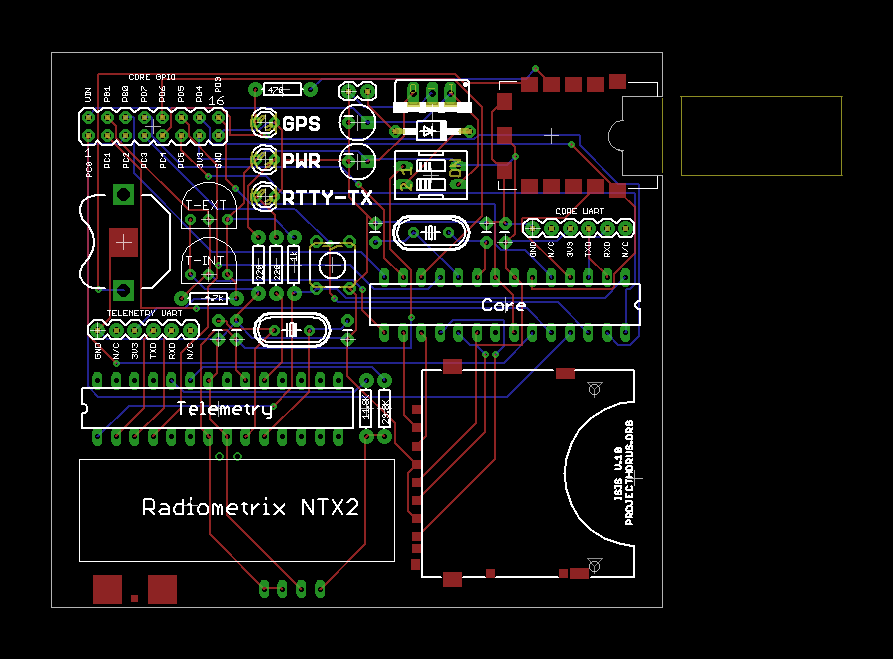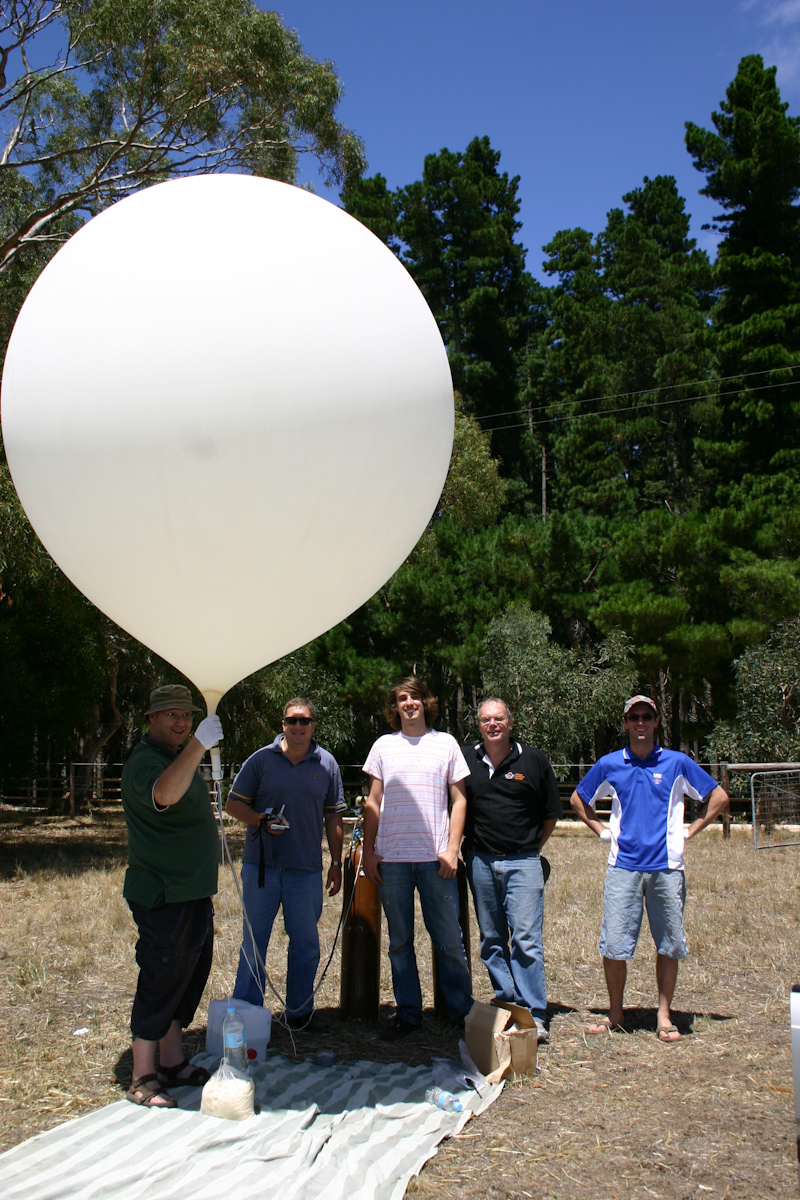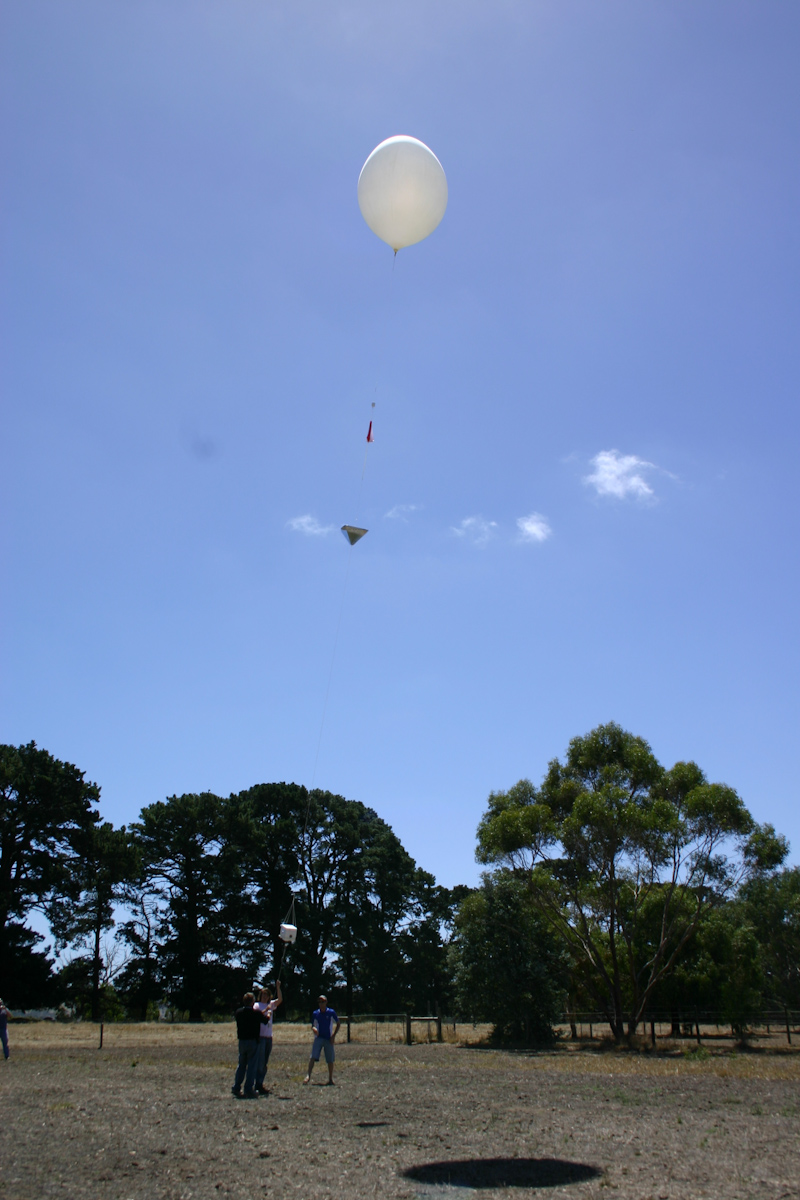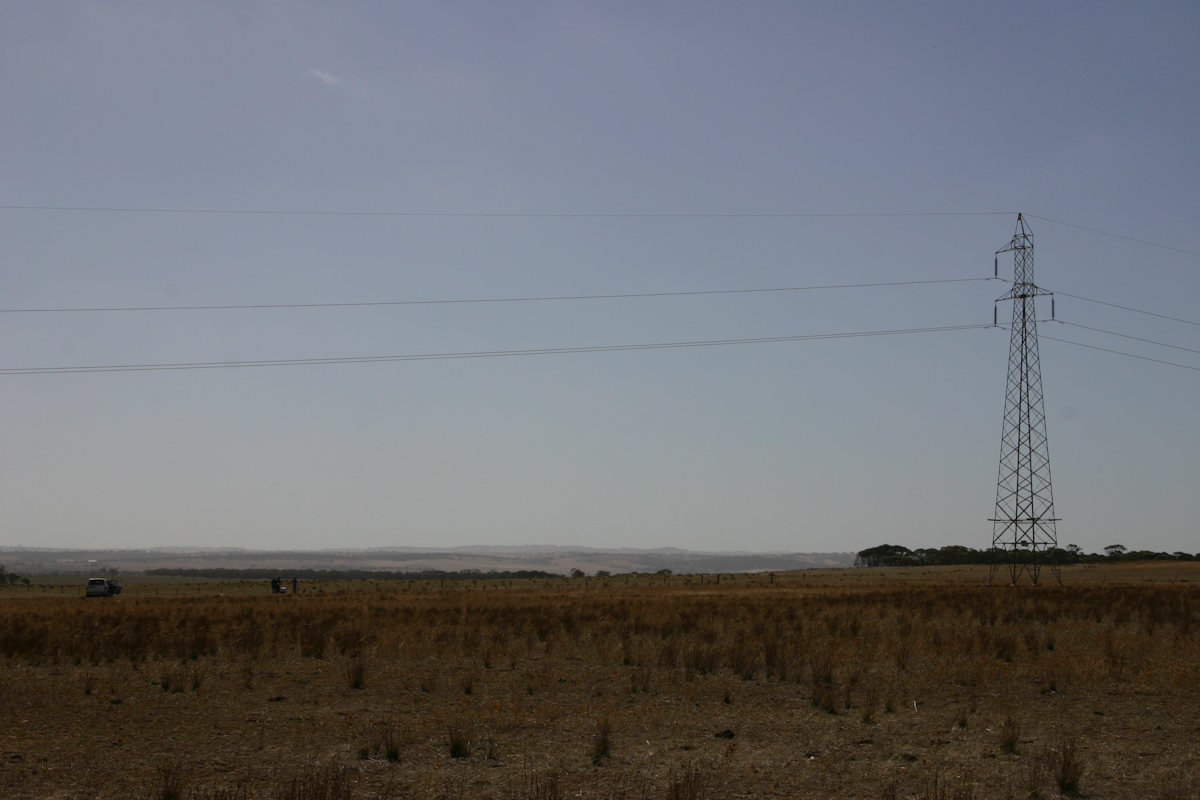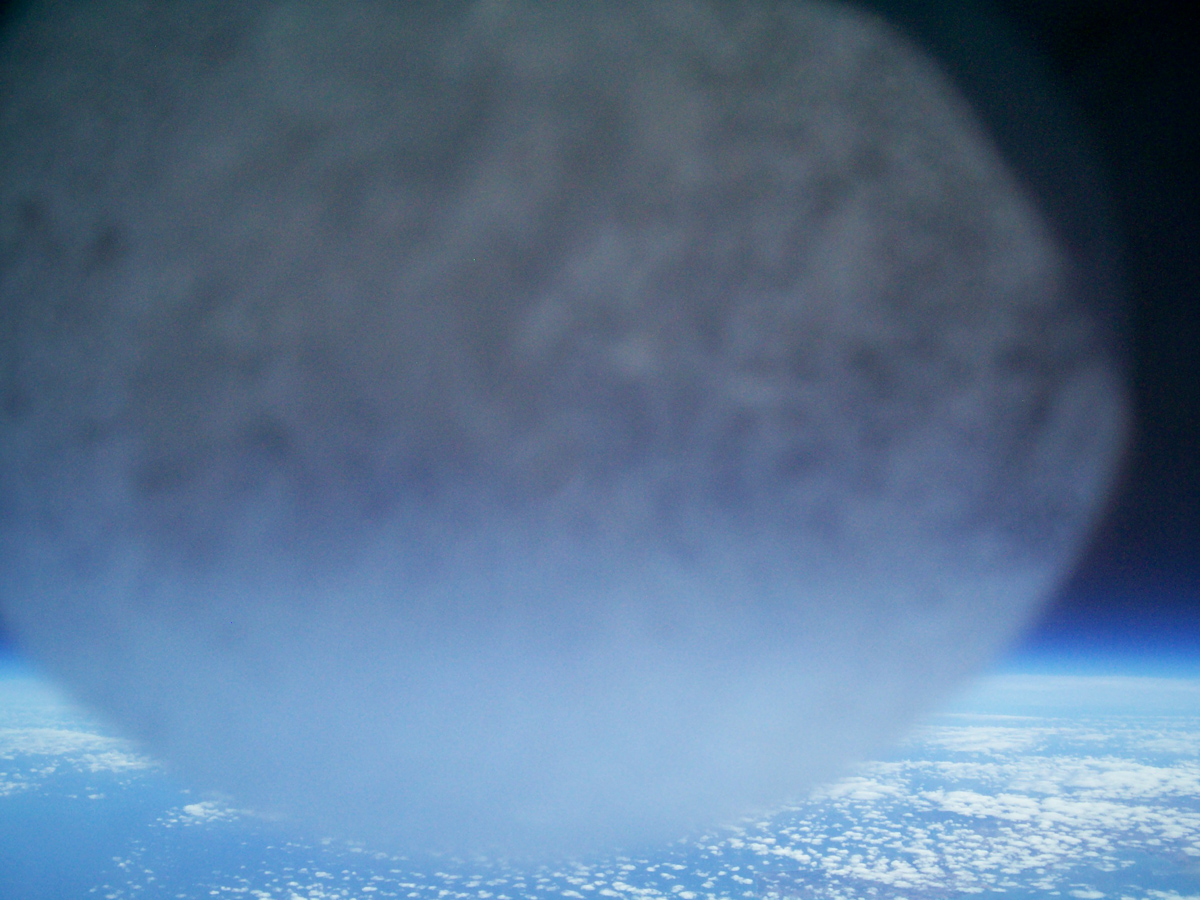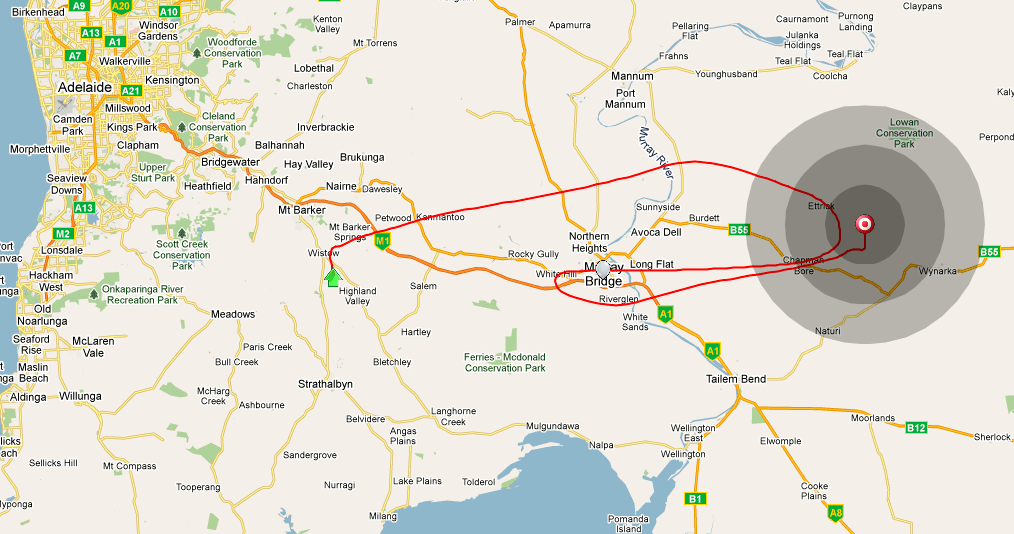Future launches
The blog has been quiet since launch due to catching up with real world commitments - thanks to all who have emailed me recently to congratulate us on the launch! ![]()
I am planning on launching more balloons, and have been experimenting with options for flight computers - whilst the Arduino was great, it was somewhat limited by its form factor - ideally future launches will carry a custom flight computer with GPS, radio & SD logging all on the one board.
I have been working on the design of such a board - here's a picture of the current design:
The board is based around 2 ATmega 328P microcontrollers - one acting as the core of the flight computer, the other dedicated to handling telemetry. This will allow the radio telemetry to be offloaded from the core, meaning more can be done whilst the lengthy RTTY transmission takes place.
I've switched from the Lassen IQ GPS module to the Falcom FSA03, which I sourced from Esawdust. This module is far more sensitive than the Lassen, and also features the Sarantel helical antenna, which performs in most any orientation. The module is also capable of providing fix data at 4hz.
The Radiometrix NTX2 25mW transmitter is also present on the board, as is the SD card used for logging. I've also included indicator lights to make launch & setup much easier. The board has a DIL header providing connections to system voltages & data pins on the core for connecting daughterboards which will house additional sensors/equipment.
With the radio offloaded to a dedicated processor, the board will be able to log position, temperature, pressure, humidity much more frequently - resulting in better data at the end of the day.
I've also been experimenting with PCB production - I bought myself a Dremel drill press & some 0.8mm tungsten carbide drill bits, and have whipped up some simple test boards - given that I'd never tried etching PCB's at home, I was rather happy with the results on my first board, an ATmega 328P protoboard whipped up in a couple of hours.
I'm looking at having the main board commercially produced, and will likely hand-etch the daughterboards to go with it.
As for future launches - I plan to launch the original flight computer at least once more, likely quite soon. I'll be experimenting with a few ideas in future launches: higher baud rates, coding (error correction) & eventually bi-directional communication.
Look out for more soon! ![]()
A successful launch!
Project Horus was launched at around 2:30pm local time and successfully recovered at around 4:30pm yesterday, reaching a maximum altitude of 29,606m! ![]()
Our launch was planned for 12:30pm, but was delayed by a couple of hours as assembly turned out to take longer than expected. We were further delayed by an odd GPS issue - none of our modules were able to gain lock for about half an hour. We'd also forgotten our scales, so filling the balloon until it had the right amount of free lift turned into a bit of educated guesswork.
After much stalling & waiting (unsuccessfully) for GPS lock, we decided to launch without lock, figuring there must be some sort of local source of GPS interference, or bad ephemeris data being broadcast. We tied the balloon to the chute, reflector & payload & let it go...
Once the balloon was up, we had a few nervous minutes of waiting for it to gain GPS lock, and then another few minutes waiting for altitude to be correlated. Pretty soon the balloon was indicating that it had lock, but its ascent rate was much higher than we had predicted, meaning our landing predictions would be invalid.
natrium42 was following the launch online and kept us updated on the balloon's progress via #highaltitude, as we were too busy driving, making sure we were decoding telemetry & trying to work out where to go to take note of much of what the balloon was doing.
Soon the balloon had picked up speed and was heading east - 2 of our chase cars headed for the freeway to try & catch up, and Adrian VK5ZSN took an alternate route in his more capable 4wd.
A brief while later, we'd reached Murray Bridge, and were still decoding the balloon OK. We started heading north towards Palmer in anticipation of its flight path, but soon realised that the balloon would likely not be getting much higher, as it had just passed 28km. 1600m and a few minutes later, the balloon popped and started heading back down at 200km/h, owing to the lack of atmosphere to slow it down at this altitude. We turned around south of Tepko and headed back towards Murray Bridge, and let the other cars (both of which had stopped for lunch!) know of the balloon's descent.
As the balloon came below 10km, we realised that the parachute must not be working effectively - it was still falling far too fast. We scrambled to place ourselves in ideal spots - one car atop a hill with a yagi antenna following the balloon down to the ground, another racing towards where we thought the balloon would land.
As the balloon landed, I was about 2-3km away - from this distance I could hear the telemetry signal become very weak, though still audible. Our last fix on the balloon was at about 300m altitude. Given its descent rate, it would have hit the ground 5-10 seconds after this, so we would have no trouble finding it. We confirmed with our third car that they were still decoding the landed payload with the yagi from a few km away, and headed to the landing site - where we found Adrian & Co who'd just sought permission for us to retrieve the payload from the farmer whose paddock we had landed in.
Despite the hard impact, the payload was in good shape (except for the antenna) & was still transmitting data. After a brief introduction to the local cows, we called it a day and headed home to go over the data & photos captured.
Unfortunately for us, we experienced a lot of condensation on the inside of our payload (or maybe ice outside), which resulted in very blurry photos above about 5-10km. This is something which I'll improve on in future, either by flushing the payload with helium to clear any moisture before launch (thanks Rob), or avoiding the use of glass filters to seal the payload up and allowing the camera lenses to poke out of the sealed interior.
Despite the blurry photos (which we'll improve on next time!), we managed to get some good data, and the telemetry systems worked very well in their first real world test. Several amateur radio operators tuned in for the launch & helped us track the balloon, which was great. Our barometric sensor did a great job of calculating the pressure altitude until it reached it zero-value at around 15km. The payload's external temperature was embedded in the polystyrene foam, which prevented it from registering as low as the temperature no doubt reached - something else to work on next time.
A big thanks to all involved for helping this to be a successful launch - esp to Adrian, Alex, Brad, Guy, Alan, Andrew & Holly for coming out on the day and tracking the balloon with me! An interactive map of the balloon's flight path & our chase car routes is available online, and you can also download it to view in Google Earth.
Chase car tracking
I've written some software to allow our chase cars to post their current positions to the tracker during the flight, as well as the balloon payload.
This means the position of both the balloon & 2 chase cars will be updated in near real time - position updates will be uploaded every 10 seconds. This relies on our chase cars having internet access - we may encounter some areas of no mobile broadband service, though we should have at least GPRS coverage most of the time.
I've included a screenshot of the tracker as I went for a drive to test the chase car tracking software.
Launch date set!
After a spell of less than ideal weather for the last week, we have an opening to launch this coming Friday. Should weather change suddenly for Friday, Saturday also looks ok - I've had NOTAM's issued for both days.
I've included a predicated flight path, more information to come soon!
